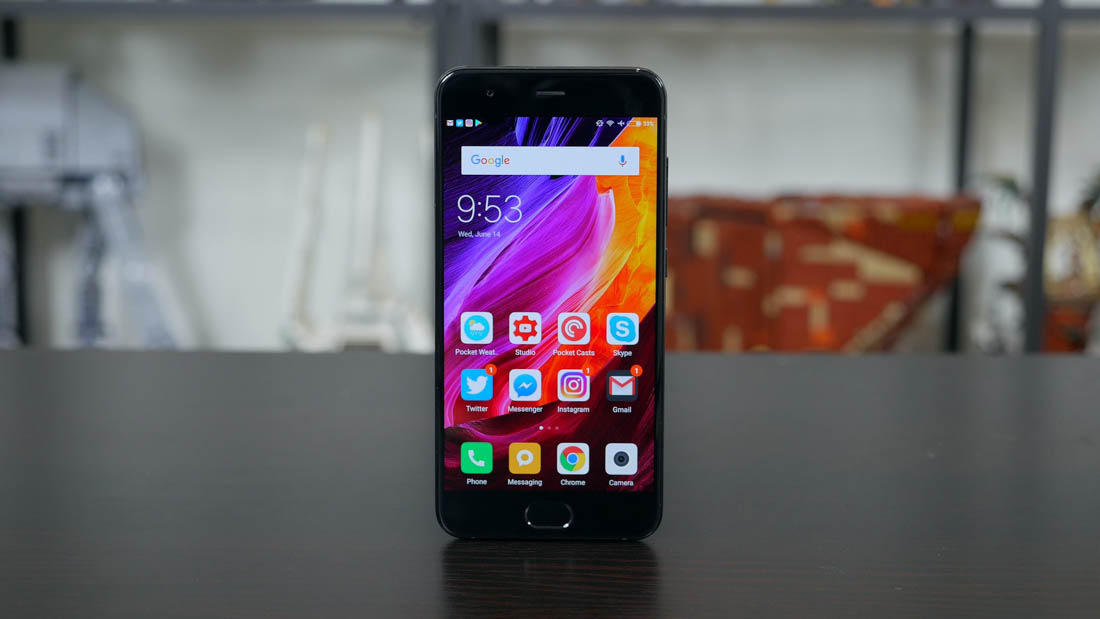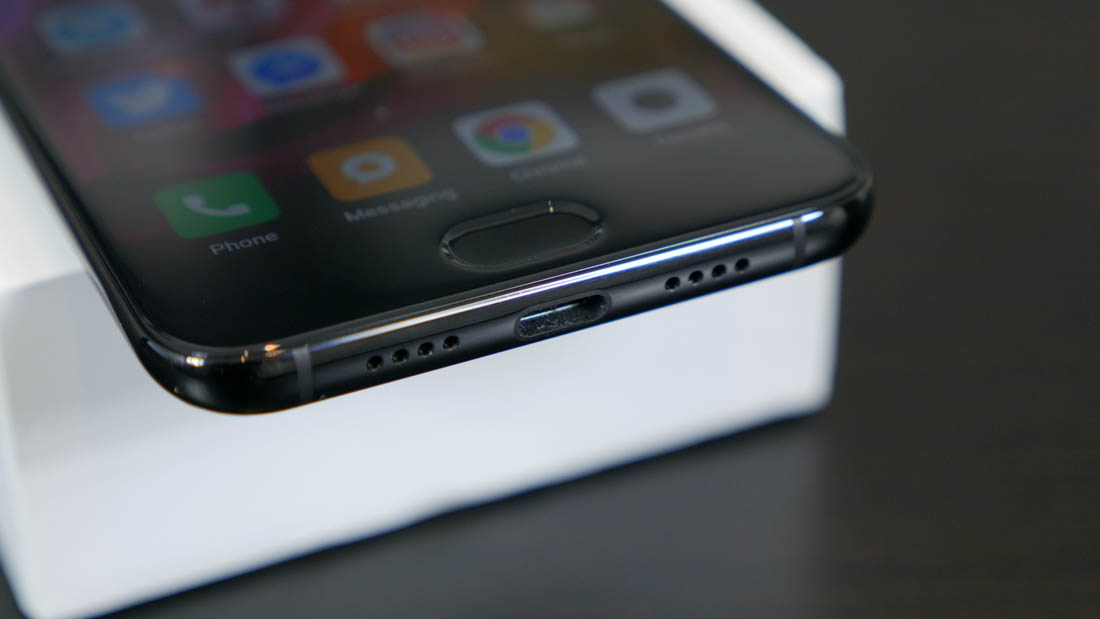Xiaomi Mi 6 Review
If you want top-stop hardware in the cheapest possible smartphone, y'all should look no further than Xiaomi's Mi line. Last year's Mi v packed all the all-time hardware, including height-cease Qualcomm Snapdragon SoCs and high quality cameras, in a sub-$400 package, undercutting pretty much every device on the market, including the OnePlus iii.
In 2022, Xiaomi has updated their flagship product line with the Mi six, and the story remains largely the same. Y'all'll be getting top-end hardware – including a Snapdragon 835 SoC, 6GB of RAM, 64GB of internal storage and a dual 12-megapixel camera solution – in a packet that costs effectually $430 when imported. With phones like the Galaxy S8 costing over $700, and the LG G6 setting you back $550 for largely concluding-generation hardware, the Xiaomi Mi 6 is an absolute bargain at this cost point.
The but downside to purchasing the Xiaomi Mi 6 is, equally with all Xiaomi devices, its lack of availability in Western markets. That didn't terminate us from obtaining 1, though: Gearbest will happily transport i anywhere in the world for a very competitive toll.
Get the 128GB Xiaomi Mi 6 from Gearbest for simply $471.99. Follow this link and employ offer code EGMI6 at the checkout.

Let'due south talk nigh the design of the Xiaomi Mi 6, because I know the company has spent a lot of effort creating what they depict as a premium chassis. In fact, Xiaomi was quick to inform everyone during their announcement presser that the Mi half-dozen's stainless steel structure requires a 50-step manufacturing procedure and over 270 individual operations. This sounds similar a fair scrap of piece of work, and the fact the chassis is stainless steel presents a point of difference compared to other phones that tend to utilize aluminium.
Unfortunately for users, the Mi half dozen is barely a stainless steel phone at all. The entire front and rear panels are constructed from drinking glass, with simply the edges giving you that metallic look. The build quality hither is fantastic, with extremely swooshable glass and a well-nigh seamless transition from glass to metal edges. Xiaomi has likewise ensured that every element is symmetrically aligned, which is a touch on of polish not oftentimes seen among Android OEMs.

While the build quality is slap-up, I'm not a fan of the full general Mi half-dozen design for several reasons.
First, the Mi 6 is ridiculously slippery. The drinking glass dorsum panel repels your fingers in a similar way to the Galaxy S8, while the metal edges appear to exist coated with the same glossy finish as the rear. At times, the Mi 6 tin be a difficult phone to hold, though its relatively compact 5.2-inch size does help somewhat. The Galaxy S8 is a more slippery phone due to its slim edges, but the Mi 6 comes in a close 2nd.
Luckily for buyers hither, merely the rear glass panel is curved to either edge, and even then, the curve is minimal compared to the Galaxy S8. The front panel is entirely apartment, which protects the brandish from shattering when you drib it on an border. Having glass on either side is always a bit of a risk, though I suspect the Mi 6 won't be as frail as the Galaxy S8 due to its more sensible display blueprint.

One of the other issues with the Mi six'south design is only how sleeky it is. I received a black model to review, and this variant attracts noticeable fingerprints like zero else. You'll be cleaning this telephone 10-15 times a day if you want it free from fingerprints, as it gathers grime literally as soon every bit y'all touch it. I tend to recall glossy finishes give expensive phones a cheap-ish feel, and while I appreciate the minimal mode of the Mi 6, it doesn't strike me every bit a 'premium' build.
The premium design issue is compounded by the enormous bezels higher up and below the display.
Merely earlier I received the Xiaomi Mi 6, I was testing out the LG G6 and Samsung Milky way S8+, both of which pack extended displays and reduced bezels in their premium bodies. Plain the Mi 6 is a far cheaper device, but it'due south hard not to notice the overwhelming last-generation bezels on this handset.

Function of the reason this telephone'due south bezels are and so large is to accommodate the fingerprint sensor below the display. Like virtually phones these days, the Mi 6 fingerprint sensor works extremely well, and functions as a home button without any struggle. Flanking the sensor are capacitive navigation buttons on either side, which are configured to back and the app switcher. Rather than printing specific icons on the telephone for these functions, Xiaomi has just used dots as you tin switch the order in the software.
Xiaomi joins the list of companies, which include Apple, HTC and Motorola, that have decided to remove the headphone jack from their flagship telephone in favor of only USB Type-C. I hate everything about this. At that place is no reward to having merely a USB-C port compared to having a USB-C port and a iii.5mm headphone jack. Instead all we're left with is pain – dongle hurting – whenever we want to use headphones with a standard iii.5mm jack. At least Xiaomi includes a dongle in the box.

The Mi 6 implements stereo audio by combining the in-call speaker above the display, and a speaker along the bottom edge. Stereo audio is always better than mono on smartphones, so I appreciate the inclusion hither. Dual front facing speakers are typically the best implementation, equally the speaker forth the border tin can go blocked and tends to produce unbalanced sound. However, with the I'll accept any course of stereo sound.
Xiaomi claims the Mi half dozen is "splash proof", although the company did not provide an IP rating, so information technology's difficult to say merely how splash proof it actually is. Clearly it isn't water resistant, otherwise Xiaomi would avowal most this capability, though I suspect its splash proof in the sense that it'll exist fine if you lot spill some h2o on it. I wouldn't recommend gaming on the Mi 6 in the shower or dropping information technology in a bath.

The Mi vi includes a SIM card tray on the left edge that supports ii SIMs, yet there is no microSD expansion available here. This is the aforementioned as with the Mi 5, however this time, 64 GB of storage is standard rather than 32 GB. I tend to detect 64 GB is perfectly fine for virtually users without expandable storage, though expandable storage is e'er a nice characteristic to take. For those that need more infinite, Xiaomi does provide a 128 GB choice for effectually $70 actress.
Source: https://www.techspot.com/review/1428-xiaomi-mi6/
Posted by: millerantaistry.blogspot.com


0 Response to "Xiaomi Mi 6 Review"
Post a Comment